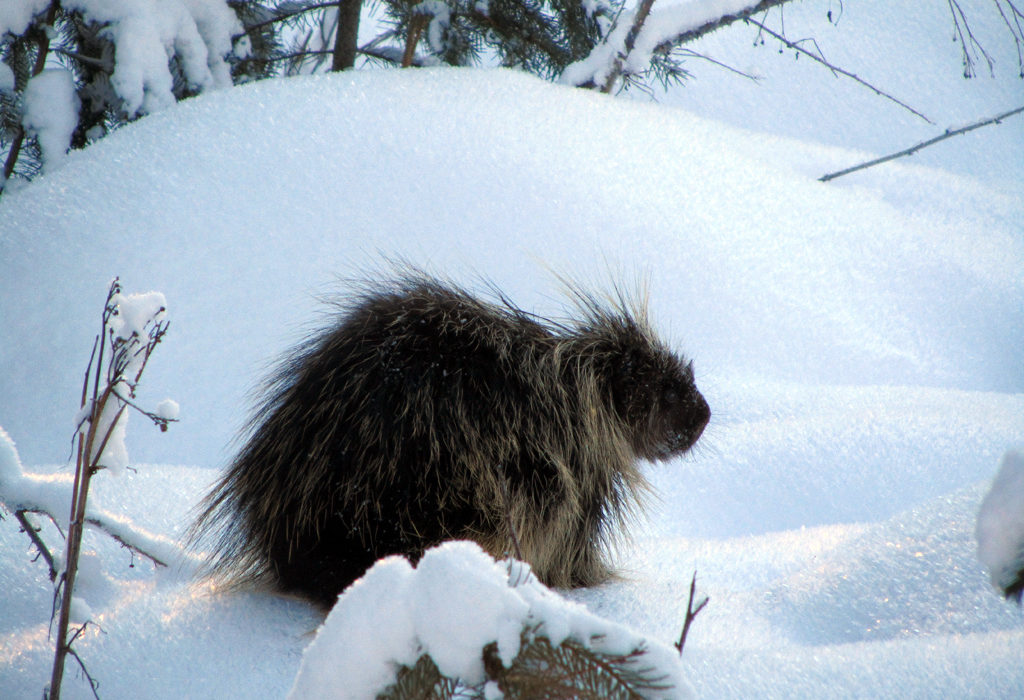
“It’s on your left as you ride the chairlift. It’s towards the top of the tree.”
What is it?
Finally, I caught sight of “it.” A brown and black blob of quills clinging to the trunk of a fir tree near the top. Ever so slowly, it started to creep down, clinging to the wood. Then it stopped again, apparently taking a mid-afternoon break to eat some bark.
As a Park Ranger, I often got asked the question, “What’s the most interesting wildlife you’ve ever seen?” I guess people expected answers like: mountain lion, bear, moose.
But the truth is the wildlife sightings that are forever etched in my memory are the animals you so rarely ever see.
Prior to my recent sighting of a porcupine while skiing at Steamboat Ski Resort earlier this week, I’d only seen one in the wild once before.
Years ago, Bryon and I decided to explore the Cache La Poudre Wilderness north of Rocky Mountain National Park. Stopping at a Forest Service Visitor Center, we learned that moose lived in the area. (This was before our neighborhood became home to several moose). They recommended driving up Long Draw Reservoir road as a good place to look for them.
After spending an hour driving up the road and looking in a every willow thicket, we gave up finding moose. But as we drove back the road, something black and brown and prickly looking caught our eye. Right next to the road, a porcupine clung to the trunk of a pine tree. The creature appeared quite absorbed in munching on the bark of the tree, so much so it completely ignored us. We stood there transfixed, watching this odd little creature.
A porcupine looks like a large blobs of tan quills and nothing else. It’s difficult to see the eyes or nose or much of anything other than its spiky armor.
Until the sighting of one this week, I’d thought that porcupines, like other mammals, probably hibernated in winter. Upon further research, I’ve found that isn’t true at all. In fact, porcupines, stay active all winter long. If you can call moving at a snail’s pace “being active.”
They continue to forage for food by “plowing” through the snow, creating troughs in the snow between their dens and feeding areas. As a somewhat small animal, this takes tremendous energy especially when the snow is deep, so their range shrinks by up to 90% in winter compared to summer.
I’ve often worried about our dogs getting in an altercation with a porcupine. Friends have told me horror stories of plucking needles from the dog’s ears and how painful it can be. With their suit of needles, you might wonder what could possibly prey on a porcupine?
Mountain lions and the infrequently seen fisher will kill a porcupine by flipping it on its back. Fishers are strong enough to hurt the porcupine by striking it, and agile enough to avoid the tail flipping quills at it. They are able to kill the porcupine by striking its belly area, the only exterior part of the porcupine not protected by its quills.
My recent sighting just goes to show that all kinds of wildlife is lurking out in the woods, even in winter. Keep your eyes open and you just might have your own magic moment of seeing something truly unique.

